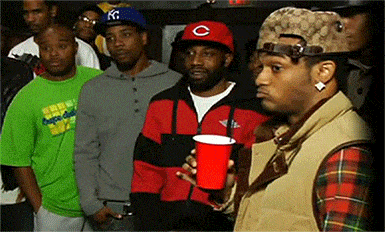GURL.
The Triple Constraint is so important. I'm glad you asked the question because Imma break it down for you real quick.
The Triple Constraint is composed of three factors that are the foundation of any project.
Time
Cost
Scope
Think about a short-term work contract. When I enter a contract, I usually want to know:
Time: How long is the contract? 3-weeks? 6-months? 1 year?
Cost: How much am I getting paid? Is the organization giving me a budget to work with, additional team members, supplies, an office space, etc. in order to fulfill the deliverables in my contract?
Scope: What kind of work am I required to do when I sign the contract? What are the results, deliverables, or things that I am required to hand over once I wrap up the contract?
The triple constraint is usually displayed as a triangle. When one factor changes, the other two need to adapt in order to accommodate for the change. The goal is to balance out the three factors and leave the project with a happy client. The quality of the project, once complete, is meant to be o-par with the client's expectations.
Below are three ways of how the triple constraint can shift. I also have a bonus example afterwards.
More time,
but less of everything else.
An example of this is a project I'm currently supporting. A graphic designer was initially given a project that involves designing a large curriculum with supporting booklets. The GD's client has two deadlines but after explaining some risks that can affect the project (ie. the client doesn't get creative input, not all the deliverables will be complete at top quality, etc.), the graphic designer was given an extension on the due dates.
A bigger budget,
but less of everything else.
When this happens, I see it as an organization pouring more people and money to fix the problem (and that's not a bad thing). For example, I was hired onto a project team because my project manager, Aden from Mez Creatives, was expected to deliver a massive professional development project for youth artists by August 2016 and had very little support. Luckily there was financial support to bring me onto the team. I joined in February 2016, I helped make her life easier, we made the tough decision to scale down the scope a bit, we wrapped the project, and built a relationship.
Lots of things to do,
but less time and less money.
For example, you are required to produce a film with the support of a granting body. You are tied to the grant deadline but it is somewhat flexible if you can ask the granting body to extend the deadline. In the film world, folks usually know how to do more than one thing, so you can give people two roles instead of one. In grants, budgets tend to be fixed unless you use your own money, find more sponsors, fundraise, or gain money in other means.
And the bonus example.
I've worked in the not-for-profit sector for a while now and I've noticed that there is an expectation to make something out of nothing. There is a HUGE scope expectation with a tiny budget, minimal resources, and an unrealistic timeline. It feels very unsustainable.
In some projects I've worked on, my client has asked for more deliverables than what is outlined in the contract. This is called "scope creep".
The PMBOK defines scope creep as: The uncontrolled expansion to product or project scope without adjustments to time, cost, and resources.
Scope creep looks like this triangle below:
When I worked on on projects with a huge scope, unrealistic timelines, and a shoestring budget it felt like I was working with chaos popping-up sporadically.
Kind of like this:
Sometimes I've entered situations where it feels like PURE chaos.
Kind of like this:
Lol! Luckily, I've lived through the experience so that now I know how to better prioritize my time, manage risks, and prevent critical issues earlier on.
If you'd like to learn more about how I do that, check out my Time Management Matrix.








